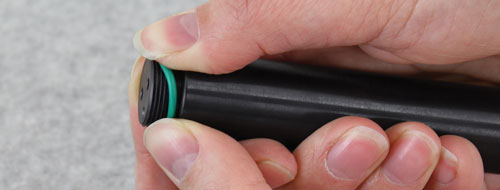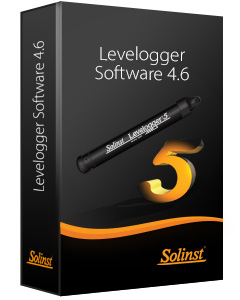Levelogger maintenance consists of inspecting and replacing o-rings, and cleaning the outside casing, the circulation holes and the optical eye(s). The required frequency of cleaning is dependent on several aspects of the monitored water quality. In freshwater with good to excellent water quality, the Levelogger cleaning requirements will be very minimal; amounting to a seasonal or even annual maintenance inspection.
In most cases cleaning can be accomplished by rinsing the Levelogger and using mild, non-residual, non-abrasive household cleaners using a very soft-plastic, bristled, pipe-cleaner type brush. Do not insert any object through the circulation holes at the sensor end of the Levelogger.
Note:
To clean the optical eye(s) on a Levelogger, use a clean, soft cloth or cotton swab to gently wipe away any debris and dry the eye(s). Avoid soap or cleaners, as it may leave a residue. Compressed air may also be used to clear away any debris.
In some cases simple cleaners are insufficient to properly clean the Levelogger. Several commonly occurring water conditions require specific maintenance methods, these include hard water, high suspended solids loading, biological or chemical fouling and salt or brackish water conditions.
Hard water monitoring can result in the precipitation of calcium and magnesium deposits on the pressure transducer as well as other components of the Levelogger. These deposits can be safely dissolved using a diluted solution (typically ≤ 10% strength) of acetic or phosphoric acid. Commercially available products for dissolving hard water scaling are also available and can be used if designed for household use. Some industrial strength hard water scaling removers are much higher strength and are not recommended for cleaning the Levelogger.
High suspended solids load may block the circulation ports or clog the internal pressure cell of the Levelogger. The potential clogging effect of solids deposition can be minimized by placing the Levelogger in zones of flow. To remove solids build up, rinse the Levelogger under a low flow of tap water until particles have been washed away.
Bacteriological or chemical fouling can be an important consideration in many ground and surface water monitoring projects. Sessile bacteria will often utilize installed instrumentation as an attachment substrate. Chemical deposit can be the result of electrical charge differential between the instrumentation of the monitored liquid or the result of biological or algal activity. Both forms of fouling can result in difficult to remove deposits on the Levelogger transducer, the conductivity wires and the Levelogger casing. To remove fouling use a diluted (≤ 10%) solution of sulfuric acid. Persistent material may require soaking for several hours.
Note:
The Levelogger installation cap should be left on when you are soaking a Levelogger.
Cleaning LTC Levelogger sensor pins is recommended before calibrating the unit prior to starting a project. The pins of the LTC Levelogger sensor are platinum-coated, therefore they should not be roughly cleaned or touched with any metal. They can be cleaned with a soft bristle brush, Q-tip, or cloth. Almost any acid solution can be selected to clean the sensor, provided it is highly diluted (generally less than 10% acid). The "soaking" time should be monitored and kept to a minimum.
There are o-rings on Levelogger optical ends, which are designed to prevent leaks. Depending on your application, you may be unscrewing the caps and/or direct read cables from the Levelogger optical end more frequently. This could result in damage to the o-rings. These o-rings should be inspected regularly and replaced as required (contact Solinst for replacements).

Figure 10-25 Levelogger O-ring Damage

Figure 10-26 Replacing Levelogger O-rings
To remove the old o-ring, use your fingers to push the o-ring up and roll it off the Levelogger. Use your fingers (no sharp tools) to install the new o-ring. Do not use any grease or silicone lubricant to help install the o-ring. Use a small amount of water if required, then wipe dry.
Note:
It is important to ensure the installation cap or a Direct Read Cable is attached to the Levelogger during storage to prevent unnecessary battery drain and to protect the optical eyes.
Before storing Leveloggers for any extended period, they should be stopped from recording, cleaned as described previously, and stored in non-freezing conditions with the cap on to protect the optical eyes and to prevent unnecessary battery drainage.




